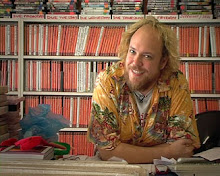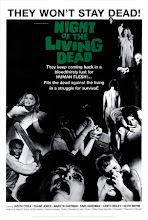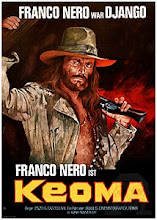
The Whip And The Body
aka La Frusta
Director “John M. Old”/Mario Bava Writers “Julian Berry”/Ernesto Gastaldi, “Robert Hugo”/Ugo Guerra, “Martin Hardy”/Luciano Martino
Cast Daliah Lavi (Nevenka Menliff), Christopher Lee (Kurt Menliff), Tony Kendall (Christian Menliff), “Isli Oberon”/Ida Galli (Katia), “Alan Collins”/Luciano Pigozzi (Losat)
 We are proud to present two early films from the master of Italian horror Mario Bava, both starring the legendary Christopher Lee. First is a gothic melodrama with a lurid undercurrent of sexual perversion: The Whip And The Body from 1963, was made after his early masterpieces of gothic horror Black Sunday and Black Sabbath, and while not as well known, will certainly be a memorable one here on Schlock Treatment.
We are proud to present two early films from the master of Italian horror Mario Bava, both starring the legendary Christopher Lee. First is a gothic melodrama with a lurid undercurrent of sexual perversion: The Whip And The Body from 1963, was made after his early masterpieces of gothic horror Black Sunday and Black Sabbath, and while not as well known, will certainly be a memorable one here on Schlock Treatment.
 As a horror tale the gothic elements are amplified: a family riddled with guilt, jealousy, betrayal, not to mention incest and madness. Disgraced nobleman Kurt returns to the family castle to find his brother Christian is marrying his former sex slave (and family member) Nevenka. The family still hasn’t forgiven Kurt for seducing the servant’s daughter Tania who subsequently killed herself. Every member of the family and staff have a motive for killing Kurt, so when he is stabbed through the heart with Tania’s dagger, no one is surprised. That is, until Kurt returns and continues his sado-masochistic obsession with Nevenka from beyond the grave. “Why do you torture me?” she implores a red gel-soaked phantom Kurt, while the family is picked off one by one in the ultimate love-hate death pact. Other people are Hell, it’s often argued, and particularly when it’s your own blood. My advice to the family would be: don’t shit where you eat.
As a horror tale the gothic elements are amplified: a family riddled with guilt, jealousy, betrayal, not to mention incest and madness. Disgraced nobleman Kurt returns to the family castle to find his brother Christian is marrying his former sex slave (and family member) Nevenka. The family still hasn’t forgiven Kurt for seducing the servant’s daughter Tania who subsequently killed herself. Every member of the family and staff have a motive for killing Kurt, so when he is stabbed through the heart with Tania’s dagger, no one is surprised. That is, until Kurt returns and continues his sado-masochistic obsession with Nevenka from beyond the grave. “Why do you torture me?” she implores a red gel-soaked phantom Kurt, while the family is picked off one by one in the ultimate love-hate death pact. Other people are Hell, it’s often argued, and particularly when it’s your own blood. My advice to the family would be: don’t shit where you eat.
 It’s hard to believe this film was made in 1963. There’s a ghoulish amount of blood, not to mention the rotting corpse, but most shocking of all is the beach scene of Kurt whipping Nevenka in a frenzy before making love to her – it’s like From Here To Eternity, Opus Dei style. Lee plays his Sadean archetype with superior menace, a remarkable performance and ripe for rediscovery. The Whip is lacking the starkly memorable presence of Barbara Steele – Daliah Lavi as Nevenka even looks like Steele with her stately manner and wide, tragic eyes, but is sadly no match – and missing the elaborate and truly terrifying setpieces of Black Sabbath, relying instead on tired spookshop techniques like tree branches on windows and secret passageways.
It’s hard to believe this film was made in 1963. There’s a ghoulish amount of blood, not to mention the rotting corpse, but most shocking of all is the beach scene of Kurt whipping Nevenka in a frenzy before making love to her – it’s like From Here To Eternity, Opus Dei style. Lee plays his Sadean archetype with superior menace, a remarkable performance and ripe for rediscovery. The Whip is lacking the starkly memorable presence of Barbara Steele – Daliah Lavi as Nevenka even looks like Steele with her stately manner and wide, tragic eyes, but is sadly no match – and missing the elaborate and truly terrifying setpieces of Black Sabbath, relying instead on tired spookshop techniques like tree branches on windows and secret passageways.
 However it’s a minor classic in Bava’s filmography, and stunning to look at. Trained as a cinematographer, Bava sets up each shot like a painting and bathes them in his customary red-and-blue palette. It’s hard to argue it’s art when the film’s so sleazily and joyously B-grade, but I’m sure you’ll agree we’re broadening the definition of “art” tonight with Bava’s kinky shocker The Whip And The Body.
However it’s a minor classic in Bava’s filmography, and stunning to look at. Trained as a cinematographer, Bava sets up each shot like a painting and bathes them in his customary red-and-blue palette. It’s hard to argue it’s art when the film’s so sleazily and joyously B-grade, but I’m sure you’ll agree we’re broadening the definition of “art” tonight with Bava’s kinky shocker The Whip And The Body.
aka Hercules In The Center Of The Earth, Ercole Al Centro Della Terra, Hercules vs. The Vampires
Directors Mario Bava, Franco Prosperi Writers Mario Bava, Sandro Continenza, Franco Prosperi, Duccio Tessari
Cast Reg Park (Hercules), Christopher Lee (King Lico), Leonora Ruffo (Princess Deianira), George Ardisson (Thesus), Rosalba Neri (Helena)
 We backtrack a few years in the Mario Bava filmography to 1961, and an early film for Bava as director. By the time Hercules In The Haunted World was released the sword and sandal (or “peplum”) genre was at its midpoint, with Italian production companies turning out one sausage-meat-squeezed-into-a-human-skinsuit actioner after the other. Only a few rise to the top of the B-film mudpool to be recognized as minor classics, and this, my dear Schlock fiends, is one of them.
We backtrack a few years in the Mario Bava filmography to 1961, and an early film for Bava as director. By the time Hercules In The Haunted World was released the sword and sandal (or “peplum”) genre was at its midpoint, with Italian production companies turning out one sausage-meat-squeezed-into-a-human-skinsuit actioner after the other. Only a few rise to the top of the B-film mudpool to be recognized as minor classics, and this, my dear Schlock fiends, is one of them.
 The story is pure peplum with little deviation from the rules. Demigod Hercules travels to the kingdom of Ecalia with his friend Theseus to be reunited with his love, the king’s daughter Diarina. After fending off would-be assassins, he arrives to find the king dead and Diarina in a death-like trance under the control of her regent uncle Lyco (a creature described as “the spirit of evil on Earth” played, appropriately enough, by Christopher Lee). The film unfolds as a predictably mythic quest to find a magic rock from Hades, the world of the dead presided over by the god Pluto, to restore Diarina to life.
The story is pure peplum with little deviation from the rules. Demigod Hercules travels to the kingdom of Ecalia with his friend Theseus to be reunited with his love, the king’s daughter Diarina. After fending off would-be assassins, he arrives to find the king dead and Diarina in a death-like trance under the control of her regent uncle Lyco (a creature described as “the spirit of evil on Earth” played, appropriately enough, by Christopher Lee). The film unfolds as a predictably mythic quest to find a magic rock from Hades, the world of the dead presided over by the god Pluto, to restore Diarina to life.
 It all sounds like a hundred muscleman actioners and that’s exactly how we’d remember it without director Mario Bava at the helm. Bava had worked as cinematographer on some of the more strikingly visual sword and sandal films of the late Fifties. Hercules In The Haunted World was his first as director, and despite an embarrassingly low budget to work with, the talented cameraman was able to work miracles. Aside from the creepy studio-bound sets bathed in gels and dry ice, there’s subtle camera movements and breathtaking compositions – take the moment, for instance, when Diarina emerges from her sarcophagus and floats towards Lyco. Then there’s Bava’s trademark macabre touches, like blood seeping from vines holding the souls of the Underworld, and the final journey through Hell is a sight to behold.
It all sounds like a hundred muscleman actioners and that’s exactly how we’d remember it without director Mario Bava at the helm. Bava had worked as cinematographer on some of the more strikingly visual sword and sandal films of the late Fifties. Hercules In The Haunted World was his first as director, and despite an embarrassingly low budget to work with, the talented cameraman was able to work miracles. Aside from the creepy studio-bound sets bathed in gels and dry ice, there’s subtle camera movements and breathtaking compositions – take the moment, for instance, when Diarina emerges from her sarcophagus and floats towards Lyco. Then there’s Bava’s trademark macabre touches, like blood seeping from vines holding the souls of the Underworld, and the final journey through Hell is a sight to behold.
 British-born Reg Park was a former runner-up to Steve Reeves in the Mr Universe contest before winning the title three times, and so can more than hold his own in the oiled muscleman stakes. As always, Christopher Lee is at his cadaver-like best, playing a semi-dead bloodsucker at the height of his Dracula fame (and pre-empting the film’s alternate title Hercules vs The Vampires). Tragically his distinctive voice dubbed by someone else, and even more disconcerting is his pageboy wig, but these are minor quibbles – it’s a stunning frightfest stapled to a muscleman actioner as we catch Hercules In The Haunted World.
British-born Reg Park was a former runner-up to Steve Reeves in the Mr Universe contest before winning the title three times, and so can more than hold his own in the oiled muscleman stakes. As always, Christopher Lee is at his cadaver-like best, playing a semi-dead bloodsucker at the height of his Dracula fame (and pre-empting the film’s alternate title Hercules vs The Vampires). Tragically his distinctive voice dubbed by someone else, and even more disconcerting is his pageboy wig, but these are minor quibbles – it’s a stunning frightfest stapled to a muscleman actioner as we catch Hercules In The Haunted World.























































































No comments:
Post a Comment